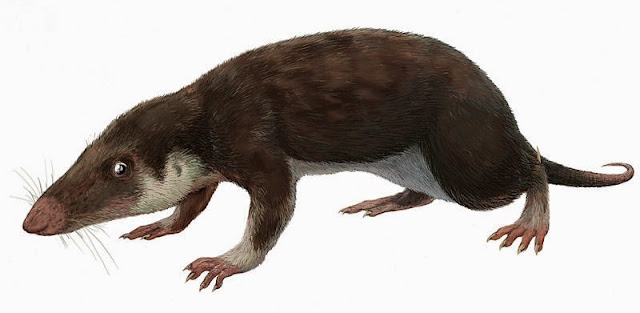Today we’re going to the Mountains of the
Moon – but not those on the moon itself. We’re going to central Africa.
There isn’t really a mountain range specifically named the
Mountains of the Moon. The ancients, from Egyptians to Greeks, imagined or
heard rumor of a mountain range in east-central Africa that was the source of
the river Nile. In the 18th and 19th centuries,
explorations of the upper Nile found the sources of the Blue Nile, White Nile,
and Victoria Nile and identified the Mountains of the Moon with peaks in
Ethiopia as well as 1500 kilometers away in what is now Uganda. Today, the
range most closely identified with the Mountains of the Moon is the Rwenzori
Mountains at the common corner of Uganda, the Democratic Republic of Congo, and
Rwanda.
This location is within the western branch of the East
African Rift system, an 8,000-kilometer-long break in the earth’s crust that’s
in the slow process of tearing a long strip of eastern Africa away from the
main continent. We talked about it in the episode for December 16, 2014.
The long linear rifts in east Africa are grabens, narrow
down-faulted troughs that result from the pulling apart and breaking of the
continental crust. The rifts are famously filled in places by long, linear rift
lakes including Tanganyika, Malawi, Turkana, and many smaller lakes.
 |
| Virunga Mountains (2007 false-color Landsat image, annotated by Per Andersson : Source) |
When rifting breaks the continental crust, pressure can be
released at depth so that the hot material there can melt and rise to the
surface as volcanoes. In the Rwenzori, that’s exactly what has happened. The Virunga
volcanoes, a bit redundant since the name Virunga comes from a word meaning
volcanoes, dominate the Rwenzori, with at least eight peaks over 10,000 feet
high, and two that approach or exceed 4,500 meters, 15,000 feet above sea
level. They rise dramatically above the floors of the adjacent valleys and
lakes which lie about 1400 meters above sea level.
These are active volcanoes, although several would be
classified as dormant, since their last dated eruptions were on the order of 100,000
to a half-million years ago. But two, Nyiragongo and Nyamuragira, have erupted
as recently as 2002, when lava from Nyiragongo covered part of the airport
runway at the town of Goma, and in 2011 with continuing lava lake activity.
Nyiragongo has erupted at least 34 times since 1882. The volcanic rocks of
these and the older volcanoes fill the rift enough that the flow of rivers and
positions of lakes have changed over geologic time.
Lake Kivu, the rift lake just south of the volcanoes, once
drained north to Lake Edward and ultimately to the Nile River, but the
volcanism blocked the outlet and now Lake Kivu drains southward into Lake
Tanganyika. Local legends, recounted by Dorothy Vitaliano in her book on
Geomythology, Legends of the Earth (Indiana University Press, 1973), tell the
story of demigods who lived in the various Virunga volcanoes. As demigods do,
these guys had frequent arguments and battles, which are probably the folklore
equivalent of actual volcanic eruptions. The stories accurately reflect –
whether through observation or happenstance – the east to west migration of
volcanic activity in the range.
The gases associated with the volcanic activity seep into
the waters of Lake Kivu, which has high concentrations of dissolved carbon
dioxide and methane. Generally the gases are contained in the deeper water
under pressure – Lake Kivu is the world’s 18th deepest lake, at 475
meters, more than 1,500 feet. But sometimes lakes experience overturns, with
the deeper waters flipping to the surface. When gases are dissolved in the
water and the pressure reduces, they can abruptly come out of solution like
opening a carbonated beverage bottle. This happened catastrophically at Lake
Nyos in Cameroon in 1986, asphyxiating 1700 people and thousands of cattle and
other livestock. The possibility that Lake Kivu could do the same thing is a
real threat to about two million people.
The critically endangered mountain gorilla lives in the
Virunga Mountains, which also holds the research institute founded by Dian
Fossey.
—Richard I. Gibson






